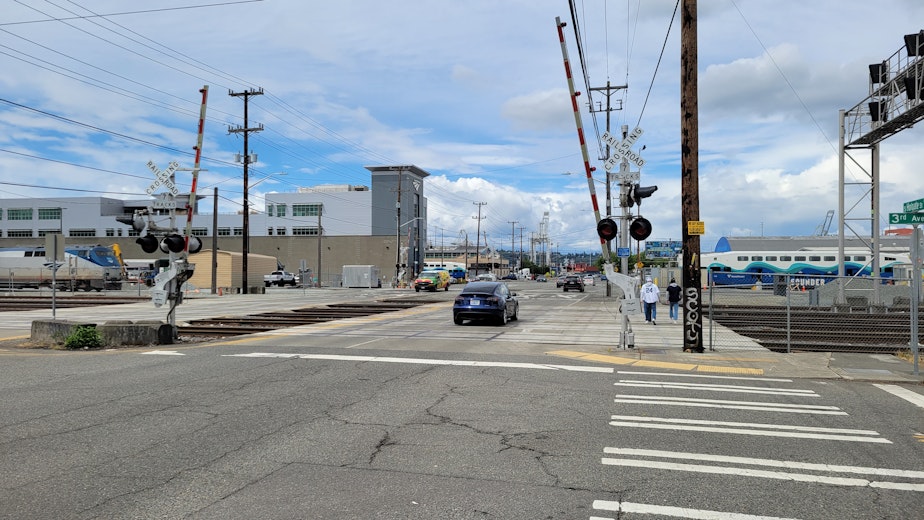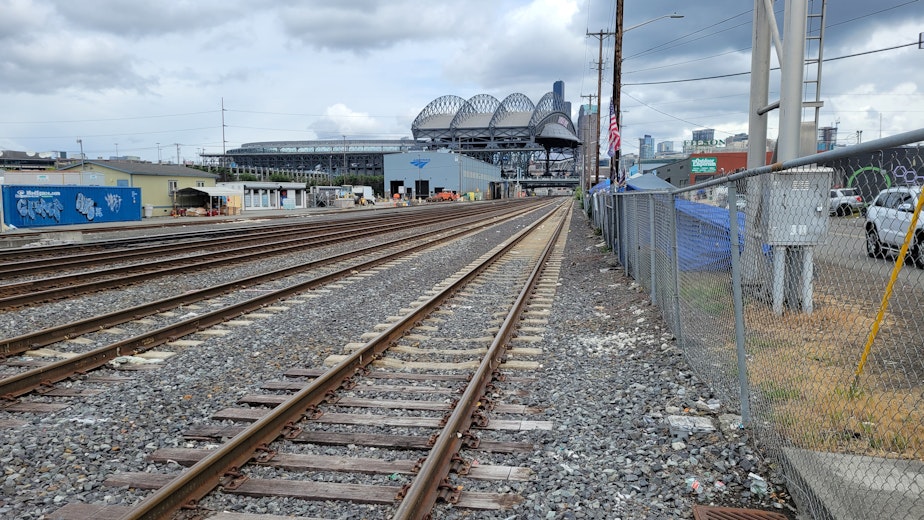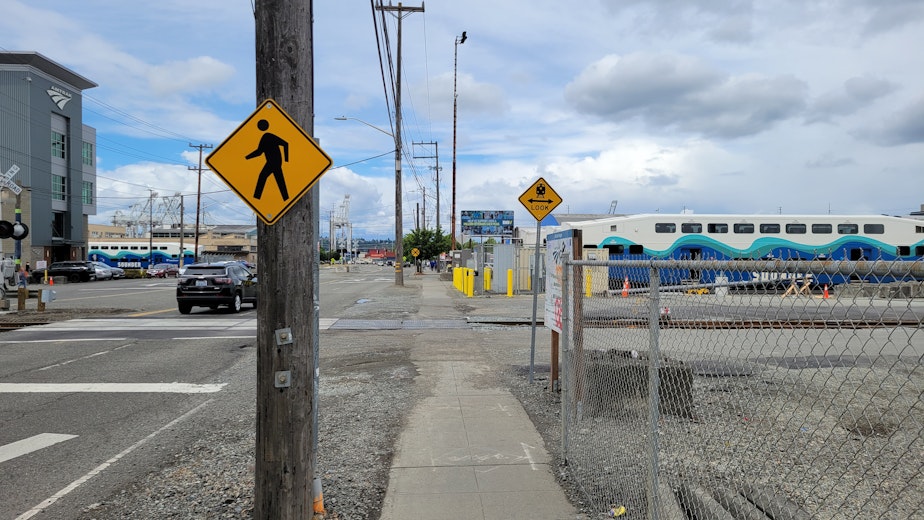SoDo is home to the state’s most dangerous RR crossing. How can we make it safer?

Seattle’s SoDo, or “South of Downtown,” is an industrial area.
It encompasses the space from the two stadiums, a myriad of fast-food chains, Starbucks' headquarters, and ends at the West Seattle Bridge.
Right in the middle of it all, sandwiched between Occidental and Third Avenue, is a large rail-yard consisting of nine tracks with one street, South Holgate, crossing through it.

According to a study by the Washington Utilities and Transportation Commission, it’s one of the most dangerous railroad crossings in the state. Four people died at the crossing between 2011 and 2020. And in categories including “exposure,” “accident probability,” and “accident severity,” the state commission gives the crossing its highest score.
But a new federal program may bring some relief. Earlier this month, the Federal Railroad Administration awarded $570 million in grants to fund “Railroad Crossing Elimination” projects across the country.
The city of Seattle will receive $2 million of those funds, and that money will be used to study the Holgate Street crossing and determine the best course of action for creating a safer rail yard.

Soundside Producer Jason Burrows visited the railroad crossing over the weekend, and was joined by Ryan Packer, senior editor at The Urbanist.
"At grade railroad crossings are particularly dangerous for people walking and biking, because they're much more likely to decide to take a risk, because they don't have a large gate that they can't pass," Packer explained. "Eliminating crossing conflicts is really the only way to sort of make it really safe for people walking and biking."
For the Seattle Department of Transportation, deciding what to do isn't as simple as just closing down a street.
SDOT Senior Deputy Director Francisca Stefan talked with Soundside about how they're looking at the upcoming study.
"I think the really key piece here is that it's an important roadway segment and an important part of the city that serves lots of different kinds of users," Stefan explained.
"We want to collect good, thorough data, and engage with partners in the study," she continued. "We will be engaging with Amtrak and BNSF, and the SoDo Business Improvement Association to really understand what folks in this area need and what the best combination of solutions looks like."
This study will supplement a previous look at the South Holgate Street crossing that was completed in 2010. That report detailed six different potential solutions which included, "Do Nothing," along with, "Close the street completely," and, "Build an Overpass."
However, that study took place before the dismantling of the Alaskan Way Viaduct, and the construction of its replacement tunnel. The overpass at Lander Street also opened in 2020, so this new study will be able to take all of these changes into account.

For transportation officials, the key priority is safety.
"SDOT is really interested in creating a safe crossing at Holgate that helps move people and goods, whatever configuration that looks like," Stefan said.
You can listen to the entire conversation in the audio above, and you can send your thoughts & feedback to the show by emailing soundside@kuow.org, or leaving a voicemail at 206-221-3213.


